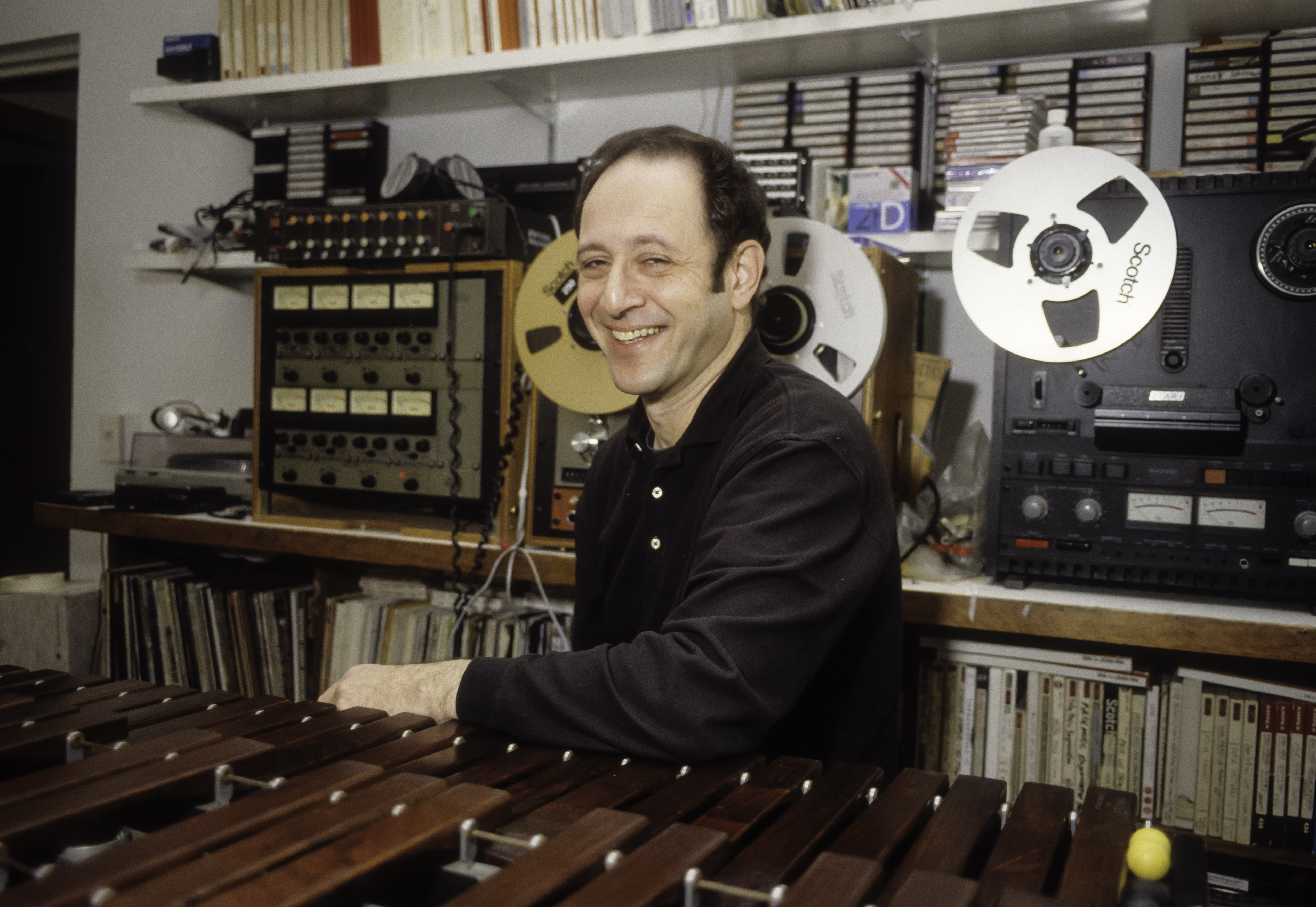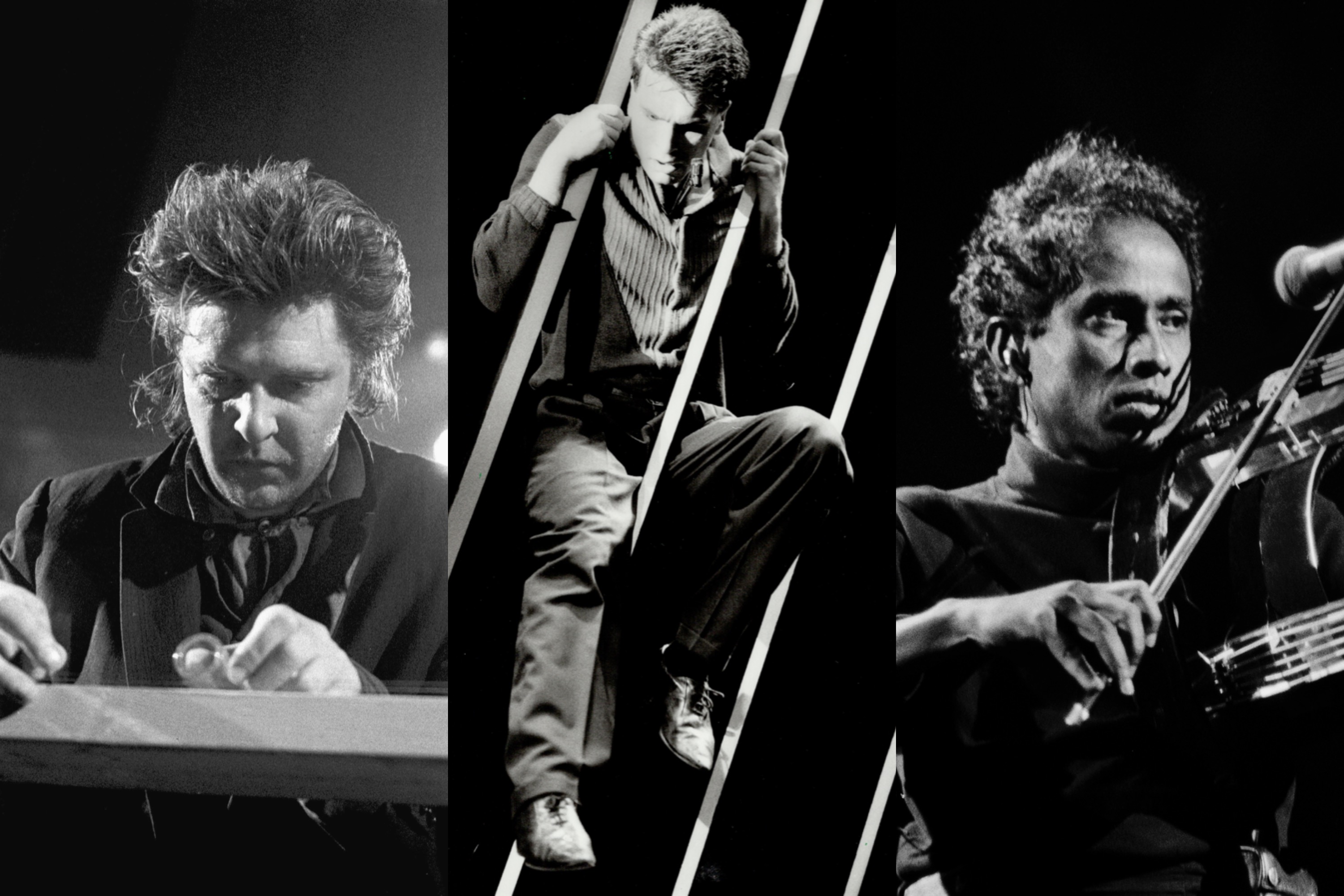This column originally appeared in the November 1985 issue of SPIN.
First you climbed up five flights of rickety stairs. Assuming you didn’t go crashing through, your next step was to get a good seat. More often than not, this meant the floor, near enough to the musicians to allow you to get the full effect of the music, yet near enough to the door for you to get out easily if that effect was just too much to take. Then a small band of musicians would come in and play a highly repetitive, pulsating, almost hypnotic form of music in a style that was becoming known as minimalism. This was a familiar scene in the lofts and art galleries of New York’s seedy Soho district in the late ’60s and early ’70s. Composers such as Steve Reich and Philip Glass considered a concert a success if it drew 25 people. Fifteen years later, Reich’s idea of success has changed.
“On my piano at this very moment,” Reich says from his Vermont hideaway, “is a piece I’ve just started for the St. Louis Symphony. They’re scheduled to debut it on April 3 and they’ll play it at Carnegie Hall on April 11. The European premiere is already set, too.” Quite a change from small performances in dingy Soho lofts. Equally remarkable has been the growth in Reich’s music during the past 15 years. “You can see a common thread,” he says. “But, naturally, there are also great differences.” His style has developed from spare, simple exercises in rhythm to grand choral/orchestral works such as 1984’s The Desert Music, Reich’s latest release. But his basic concerns remain the same—complex, interlocking rhythmic patterns, colorful combinations of instruments, and a rapid, rock-steady pulse to keep the whole thing moving.
Reich’s music has been controversial since his early tape pieces in 1965 and ’66. Come Out and It’s Gonna Rain used unlikely sound sources—a young black man who’d been injured by the police in the first and a street-corner preacher in the second—and layered those tapes on top of themselves again and again. Then the piece’s layers would move out of sync with each other, eventually causing all sorts of striking acoustic effects. Such early works seemed more about the nature of sound than about music. 1968’s Pendulum Music, for example, consists of microphones swinging over amplifiers, and as anyone who’s ever suffered through an overamplified rock concert knows, mikes too close to amps produce feedback. When the microphones swing, they emit a short blip of feedback each time they pass the amps. As the arc of their motion decreases, the feedback increases. Eventually the mikes stop moving, coming to rest right over the amplifiers, and the feedback becomes continuous. That’s the end of the piece.
“Pendulum Music was always an exceptional piece,” Reich explains. “The best way to do it is with the crummiest material possible. That way the piece has a certain charm and humor. If you use good hi-fi equipment, you can actually hurt somebody.”
It’s a far cry from that sort of music-making to the symphonic intricacies of The Desert Music. Yet Reich has made the transition and has become one of America’s most important “new music” composers In the process. “A lot of things are changing,” Reich observes. “At first, when I looked at the orchestra as an outsider, I saw musicians who could be my father or grandfather. I knew they wouldn’t be able to play my music.” Now orchestral musicians can not only play Reich’s music, they play it well. Some are even familiar with the techniques Reich himself uses. He recalls attending a concert of his music in San Francisco and watching two of the orchestra’s percussionists setting up on either side of one marimba—something Reich’s group does a lot. “I asked why they were doing that when the score calls for two marimbas,” says Reich. “And they said, ‘We’ve seen your group do it and it looks like more fun that way.'”
The term “minimalist” might describe Pendulum Music or even 1971’s Drumming, with its insistent, apparently unchanging drum and marimba rhythms, but nothing’s minimal about such works as 1976’s Music for 18 Musicians. Listening to one of Reich’s later works is like unraveling a tapestry—it may appear simple on the surface, but a complex weave of different musical strands pulses underneath: mallet percussion here joins voices there, while pianos sneak in with the strings somewhere in the middle.
Reich insists that he’s moved to larger forms simply out of “musical necessity.” The basic thrust, he says, has always been there: “In 1971, my ensemble jumped to 12 people because Drumming demanded that. In Music for 18 Musicians it got larger again. Music for a Large Ensemble obviously made it bigger still.” Reich’s works in the ’70s grew in size and complexity, and his audience grew with him. But whether the younger contingent of Reich fans will follow his move to something as “old-fashioned” as orchestral music remains to be seen. During the ’60s and ’70s, the audience at orchestra concerts got steadily older; no one under 35 seemed interested. Along with Glass and Adams, Reich has given symphony managers something to cheer about. They may hate the music—many people still claim it sounds like a huge broken needle—but they hope the so-called minimalists will attract a younger audience to concert halls.
Reich’s orchestral talents are now in wide demand. The Desert Music has convinced many listeners (and apparently many conductors) that as far as orchestral music goes, Steve Reich has arrived. He’s been asked to write another piece for the St. Louis Symphony for their 75th anniversary in 1987, and works as well for the San Francisco Symphony and the London Sinfonietta.
October brought Reich’s 49th birthday and a period of accelerated activity. The Desert Music has just been released; his Sextet will be performed at the Brooklyn Academy of Music (B.A.M.) in late October; then B.A.M.’s touring program will send The Desert Music and its composer on a whirlwind tour through Richmond, Washington, Philadelphia, Boston, Burlington, and Ottawa in January, followed by a trip to Europe. Taking The Desert Music on the road could be a logistical nightmare: the work normally uses 160 musicians. So Reich will tour with a scaled-down version he created for the Paris-based Ensemble Intercontemporain.
“Instead of the whole string section I use 13 strings and amplify them; a synthesizer takes the brass parts,” he says. “So this version uses only 40 people.”
The Desert Music is one of Reich’s finest works, though past performances have varied widely in quality. The album features Reich’s ensemble along with most of the Brooklyn Philharmonic Orchestra, a chorus (the texts are by William Carlos Williams), and conductor Michael Tilson Thomas, one of the longtime champions of Reich’s music. The performance is right on the money, and the work itself, gradually unfolding in the best Reichian style, is absolutely gorgeous. “It’s really the first piece to engage the orchestra fully,” he claims. “In the earlier works, the strings simply laid down the harmonic groundwork, like a rug on the floor. Here the strings join in with the basic pulses, then subdivide into the rhythmic patterns I often use.”
The most striking thing about The Desert Music is that Reich hasn’t simply copied the sound of his smaller ensemble works or “mellowed out.” He’s put together a five-part work that instead of rushing along at breakneck speed covers a wide range of moods, with the lyrical sections acting as a foil to the more energetic parts.
Despite his success in the concert hall, Reich still works in smaller forms. He wrote Vermont Counterpoint for the popular flutist Ransom Wilson. The work calls for eleven flutes, either live or on tape, and Wilson’s recording of it was a classical best-seller. Reich recently wrote a similar work titled New York Counterpoint for the equally renowned clarinetist Richard Stolzman. “Two of the three parts were written in Vermont,” he admits, “but I started it in New York. Its character is more aggressive, since it uses clarinets, so in my imagination at least it’s more New Yorkish.”
Although Reich has been a prominent figure in New York’s music scene, he now finds it easier to compose in Vermont. “I still live mostly in New York,” he says, “but things tend to build up there and stay with you longer. If I do an interview in New York, even after it’s done it seems to linger somehow. Here I can go right back to work.” Did Reich go right back to work after we spoke? For the St. Louis Symphony’s sake, I hope so. “I really have to have this piece done by October,” he sighs, “because I obviously won’t have the time to do it then.”
Further Listening
Sangkala!
E. Koestyara and Group Gapura
Icon Records
When most people think of Indonesian music—and face it, what else is on our minds these days?—they think of gamelans, the large percussion orchestras. Many Western musicians, Steve Reich among them, have been heavily influenced by the gamelan sound. Sangkala!, one of the catchiest, most infectious albums you’ll ever hear, features the more pop-oriented degung style, using a small group of percussionists and a flute.
Group Gapura, an all-star lineup of Sundanese musicians from the western region of the island of Java, is a percussion-based ensemble that unwinds the popular Sangkala rhythm with a glowing, metallic inevitability. The real focus, though, is flutist S. Burhan, whose style when he plays his delicate, highly ornate solos on the suling flute is oddly reminiscent of violinist Stephane Grappelli and guitarist Robert Fripp.
Indonesia isn’t Mars. Its pop charts may be full of Michael Jacksons and Princes, but this record sold more than 100,000 copies, making it one of Indonesia’s most popular records ever. With its copious liner notes, striking cover, and first-class German pressing, Sangkala! is a complete delight. —JOHN SCHAEFER
Etosha—Private Music in the Land of Dry Water / On the Future of Aviation / Ancient Dreams / Piano One
Various Artists
Private Music
Does Eno’s obsolescent ambience make you nervous? Or are you simply sick of the Windham Hill sound? Let’s graduate together to another level of slick soundtrack music for those quiet moments when little other than a cigar, a cognac, and a copy of the latest Martin Amis novel will suffice. You know, private music for private ears. Each of four new Private Music releases (220 E. 23rd St., New York, NY 10010) is available as either cassette tape or compact disc, and there’s a video too—so crank up that home entertainment center and merge.
The most ambient of the four releases comes from computer musician Sanford Ponder, whose Etosha—Private Music in the Land of Dry Water samples sounds found in nature and electronically relayers them. The operative word here is “mellow.”
But wait—with On the Future of Aviation, Jerry Goodman assembles a dramatic synthesis that recalls his past work as electric violinist for the Flock and Mahavishnu Orchestra. This is reading music that verily swings. Light and pleasantly bombastic at the same time.
The most interesting textures hereabouts are found on Patrick O’Hearn’s Ancient Dreams. The former Frank Zappa bassist teams up with Tangerine Dream member Peter Baumann, who produced this album, to create a diverse, mysterious geography of noodling moments. Just the thing for long car rides, I would think.
Finally, Piano One features the combined solo piano threats of Yellow Magic Orchestra’s Ryuichi Sakamoto, Eddie Jobson (Zappa, Roxy Music), Joachim Kuhn, and Eric Watson. Unfortunately, we seem to be back in Windham Hill territory here, so best to turn out the lights, set the alarm, and say goodnight. —RICHARD GEHR





